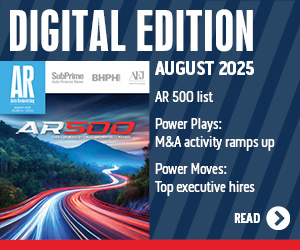Roadster adds vehicle recommendation tool to in-store platform

Roadster announced Thursday that its in-store iPad app now has a Needs Assessment tool that can allow dealers to help consumers identify vehicles that meet their needs and make recommendations based on those needs.
This Needs Assessment tool is an extension to the in-store app version of Roadster’s Express Storefront ecommerce platform. Roadster launched that in-store app in October.
The Needs Assessment tool aims to provide several options of vehicles available in the dealer’s inventory, based on what criteria or needs the shopper expresses — or even just alternatives beyond the initial car the customer was considering that still meet their requirements.
In other words, the shopper may come into the store considering Model A because of its fuel economy. But after utilizing the Needs Assessment tool, Model B turns out to be a better option.
“The dealer partners, basically, gave us some feedback that they wanted to extend what we’re doing with them on the iPad ever further up the funnel in the in-store process, literally taking it from the welcome and the positioning of the dealership, from when a customer first walks into the dealership through understanding exactly what the customer is looking for, making some suggestions around which vehicles to go look at on the lot or test-drive,” Roadster chief executive officer Andy Moss said in a phone interview with Auto Remarketing.
“And then from there, seamlessly blend in to what we already do well around inventory, pricing, check out, all the way through to final numbers and either home delivery or in-store pickup or any kind of combination,” he said.
“Really, this is about, how do you provide a mechanism within the dealership so that salesperson isn’t just literally running backwards and forwards, almost like a go-fer, between the customer and the desk and the finance office. And make it so that literally, the salesperson has the information and is empowered to pretty much work with that customer the whole way through the process.”
The notion of the customer working with just one person at the store has been a common theme among dealerships with whom Roadster works, Moss said. And it’s somewhat the goal of Roadster’s in-store process: give the salesperson, through the iPad, the power to work with the customer from end-to-end of the process.
“We look at the world as not just what’s happening within automotive, but what consumer expectations are in retail and how that world is changing,” Roadster chief marketing officer Michelle Denogean said in a phone interview.
For instance, she pointed to a phenomena forecasted by retail experts: the ecommerce technology a shopper would use to buy products at home “moving into the store itself and creating in-store experiences,” Denogean said.
“And I think for automotive this means, how do you empower the team inside the dealership with technology to be able to guide somebody and co-create with the customer,” she said.
While the use of technology has been found to boost trust with the customer at the store, Roadster also finds that technology can also “foster that human connection” between the salesperson and shopper, Denogean said.
Roadster aims to give the salesperson the tools needed to “get the conversation going” about what is most important for that shopper, be it fuel economy, safety, options, etc., Moss said.
“A lot of people walk into the dealership today having done a lot of research; they might have a specific VIN they’re looking for, a specific model, but we know that once they actually get to the dealership, quite often they actually end buying a different trim or even a completely different model once they start test-driving and interacting with the vehicles,” Moss said. “Part of it is raising the conversation up to another level about what’s important.”
'Guide the customer to the right vehicle'
At Toyota Marin — located north of San Francisco and the first store to use the white-label Express Storefront solution from Roadster — general manager Mike Christian said he sells about 40 vehicles a month completely online through the Express Storefront.
He said most customers hitting the store’s website are clicking through to the Express Storefront tool, with many completing some steps of the car-buying process online and then actually walking into the dealership to finish the deal online at the store.
That’s where Roadster’s in-store iteration of the tool can come into play.
Another consumer trend, meanwhile, highlights the importance of the Needs Assessment portion of that tool: as various industry studies would indicate, Christian said, the shopper may come in having done hours upon hours of research and have a specific vehicle in mind, only to change his or her mind.
“So, they come in and they ask for a Toyota Highlander, and we start asking questions (around) ‘why?’” Christian said in a phone interview.
Maybe the customer has another child on the way and needs a third-row seat, he said, but also needs all-wheel drive for their weekend trips to the great outdoors.
“And through what we would internally on the sales side call our needs assessment or fact finding, we’re trying to guide the customer to the right vehicle,” he said. “And the Highlander is not always the right choice. A lot of those customers end up in a Sienna or a RAV4 or some other alternative.
“So, we know statistically that’s still happening and that’s why dealerships are still important and still relevant, but how do we make that experience with the consumer convenient, and how do we make it friendly and bridge the trust gap? And how do we allow the information both that the consumer wants and the salesperson wants to get it to happen in a smooth and easy timeline?”
Through this tool, he said, dealers can discover what the consumer finds important, and share recommendations based on those needs.
“It’s making it easier for the salesperson to do their job and we can do it in a manner that the customer wants to do it,” Christian said, “and so it’s convenience for the consumer.”


